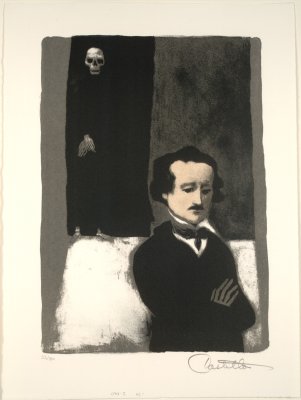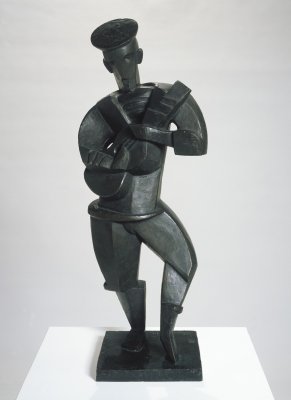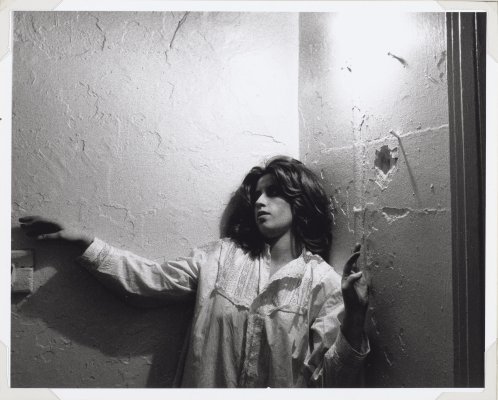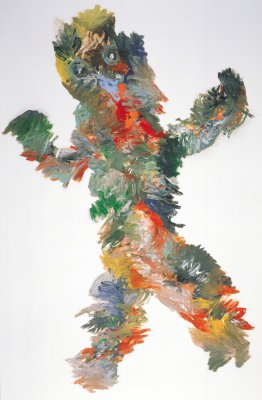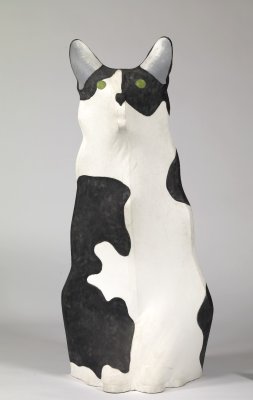Halloween is one of our favorite holidays, but we know from experience that picking a costume can be a challenge, especially during the time of social distancing. For inspiration, we've compiled a list of costume ideas drawn from works in our collection, along with basic instructions for making them a reality with objects you have at home. (Results may vary.)
We invite you to re-create the artworks shown here as your Halloween costumes and post your photos with #AKHalloween2020!
Federico Castellon's Poe (from the Mask of the Red Death), not dated (above)
This would make a perfect two-person costume: one person can don the dapper clothes of a disconsolate-looking Edgar Allan, and the other can be a looming skull head with a long black cloak. You're sure to be the life of the (socially distanced) party.Castellon was a prolific illustrator, painter, sculptor, and printmaker whose works are considered to be the first examples of Surrealism by an American artist. In 1937, Castellon began to experiment with lithography, producing several book illustrations, including this work for Edgar Allan Poe's Gothic fiction short story, The Masque of the Red Death (1842).
Jacques Lipchitz's Sailor with Guitar, 1914
First, cover yourself and a guitar in tinfoil. To imitate this sailor's jaunty pose, stand completely still while holding the guitar for as long as possible. But first, walk somewhere you are visible, because if you stay completely still in your house all night, no one will see you.
In 1914, Lipchitz created Sailor with Guitar, which was inspired by a scene he witnessed on the island of Majorca while traveling with Mexican artist Diego Rivera. A band of tobacco smugglers was trying to distract a sailor by diverting his attention to a beautiful woman. When he began to play his guitar and dance for her, they were able to carry on with their illegal activities.
Cindy Sherman's Untitled Film Still, 1979
An air of mystery pervades this photograph by Cindy Sherman, one that can be replicated as a costume through a blank expression and holding out one's hand as if to ward off an unseen foe. Bonus points for wearing a frilly nightgown and standing in a corner all night.
Sherman's series "Untitled Film Stills, 1977–1980," consists of 69 black-and-white photographs in which the artist presents herself in different settings and character roles, mostly taken in her apartment using her own objects as props.
Charles Clough's Paint Creature/Seventeen, 1978
Start with white pants and a white shirt. If you're feeling adventurous, add some white shoes and white socks, then cover yourself with white body paint on your face and arms, turning yourself into the ultimate blank canvas. In order to become the Paint Creature, liberally apply smears of paint over all surfaces, but be sure to avoid eyes, nose, mouth, etc. Add a colorful wig for extra fun.
Clough, born and raised in Buffalo, was instrumental in the formation of Hallwalls Contemporary Art Center in the 1970s. His "paint creatures" feature magazine clippings that are embedded into irregularly shaped paper cut-outs that are then covered in a swirling bold color palette of paint.
Everyone loves cats, especially human-sized cats! A large white sheet will work as a body, and you can color in the black patches with a big marker. Bonus: This costume will allow you to communicate only in meows.
Arnold began making figurative sculptures of animals and people during the mid-1950s. Her intuitive understanding of humans and their faithful companions enable her to present a form of modern portraiture.
